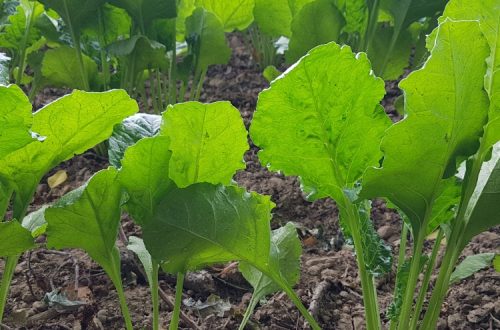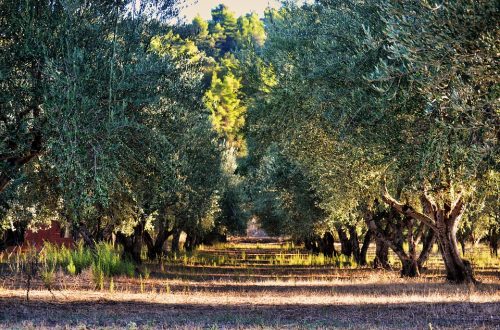Dr. ir. Aad Termorshuizena, prof. dr. Ken Gillerb, prof. dr. ir. Martin van Ittersumb, ir. Romke Postmac, ir. Brent Riechelmanc, dr. ir. Tom Schutd and prof. dr. ir. Paul Struike.
a Independent advisor on soilborne plant pathogens and soil quality, aad.termorshuizen@soilcrop.nl; b Professor of Plant Production Systems, Wageningen University; c (Senior) project manager at Nutrient Management Institute; d Associate professor of Plant Production Systems Wageningen University; e Emeritus professor of Crop Physiology, Wageningen University.
October 25, 2023
The pdf version of this text can be downloaded here.
Summary
The NEN (Royal Netherlands Standardization Institute) draft standard for biostimulants is not rigorous enough to give users confidence that the claims that the products are effective.
Introduction
Biostimulants are products that improve plant growth. They fall under the European Fertilising Products Regulation1. According to this regulation, the effects claimed by a producer must be valid for the plants stated on the label. The literal text is: “The plant biostimulant shall have the effects that are claimed on the label for the plants specified thereon.”
NEN standard for biostimulants
How tests will be conducted to ensure the mode of action stated on the label of a biostimulant product is actually correct is detailed in NEN (Royal Netherlands Standardization Institute) standards2. Last spring, the NEN published draft versions. Comments on the draft versions were invited and we submitted a response.
The NEN draft standard distinguishes three categories of crops:
1. Arable crops: 42 crops, including potato, cereals, beans, sugar beet, clover, and also (sub)tropical crops including chickpea, cotton and soybean.
2. Woody crops:, 49 crops, including apple, pear, cherry, blackberry, raspberry, plum, walnut, and also (sub)tropical crops including papaya, cocoa and avocado.
3. Vegetables and herbs:, 83 crops, including asparagus, basil, onion, Brussel sprouts, carrot, and also (sub)tropical crops including pineapple, peanut and vanilla.
According to the draft standard, an effect on a crop group can be claimed if effects have been found in six tests with two crops. This means that one can then mention on the label that the product works for all crops in the relevant crop group. But it is extremely unlikely that biostimulants have a consistent effect on such a very broad spectrum of crops (see Box 1 below). According to the NEN, the proposed method is sufficiently rigorous to ensure the products are effective. We disagree.
This problem is reinforced by, among others, the following rules:
– manufacturers of biostimulants are allowed to conduct their own tests,
– manufacturers are allowed to assign a significant effect to a test more quickly than usual3, and
– there is no obligation to report experiments in which no effects were found.
In this way, it is understandable why many biostimulants come onto the market that do not consistently deliver the effects claimed.
There is consensus in the scientific literature that biostimulants are not effective everywhere and always4: plant species, crop stage, nutritional status of the plant, fertilization rates and weather conditions are important factors.
Here we discuss two types of biostimulants in more detail:
• Arbuscular mycorrhiza. These are biostimulants based on fungi that live symbiotically with plants. Broadly speaking, these appear to only work when the availability of phosphate in the soil is too low for agriculture5, which do not occur in most European agricultural systems. The effectiveness of some products appeared to be explained by the high levels of phosphate in the products themselves6.
• Nitrogen-fixing bacteria. There are inoculants of root-nodulating bacteria (collectively known as rhizobia) that reliably increase the productivity of soybean and other legumes. The bacteria live symbiotically with the plant in root nodules, which are mainly found in leguminous plants. However, there are also many ineffective products on the market based on free-living or endophytic nitrogen-fixing bacteria which are targeted to cereals and other non-legumes. There is little evidence that these work in practice7.
On the one hand, the NEN committee’s approach, which is far too simple in our opinion, is perhaps understandable: if you want to test a biostimulant for every plant species, this would be very expensive. On the other hand, the current draft standard contains the following text in the regulation: “The plant biostimulant shall have the effects that are claimed on the label for the plants specified thereon.” The current NEN draft standard is therefore, in our view, not in line with this text.
NEN standards are established by the NEN committee which is comprised of members who pay a fee to participate; anyone can participate in drawing up the standards, and it is therefore logical that the producers of biostimulants are most represented in this committee (see Box 2 below). The first author of this commentary (Aad Termorshuizen) asked the NEN secretary whether the NEN is there to identify errors in the draft standards, and received the following negative answer: the NEN simply facilitates and coordinates, and that is all. However, he did receive a friendly ‘offer’ to become a paying member of this committee. What is missing is an independent party that tests the soundness of the standards.
The central government states that business, government and consumers can make agreements about the quality and safety of products, services or business processes under the guidance of the NEN institute. These agreements are called standards, and the process of arriving at these standards is called standardization. Standardization is a voluntary and private process and standards are usually applied voluntarily by companies. Interpreting the text on biostimulants from the Dutch government, it seems that the standards for biostimulants have been established legitimately, but the result is that there will soon be numerous biostimulants that claim much more in terms of effectiveness on their labels than they can deliver in practice. And this is because the committee is not independent: being comprised mainly of representatives of biostimulant manufacturers. It is also difficult to understand that the government itself has no representation on the committee.
There is already a great number biostimulant products on the market. Many products have little or no effect, or only have specific applications on certain crops under certain circumstances. Growers benefit from standards that allow them to trust that products actually work. This will not be the case with the upcoming NEN standards, because, as far as we know, the NEN committee has paid far too little attention to our previous comments. The NEN draft standard will now go to the CEN9 (the European standards organization) for approval, where the standardization procedure will hopefully be reconsidered.
Footnotes
1 https://eur-lex.europa.eu/legal-content/EN/TXT/?uri=celex%3A32019R1009.
2 https://www.nen.nl/normcommissie-biostimulanten.
3 Usually an effect is reported as significant if the probability that this is erroneous is smaller than 5 or 10%. De NEN-committee chose a wider margin of 15%.
4 o.a. Tourte et al., 2000, in Biol. Agric. Hort. 18:15; Paradikovic et al., 2018, Food and Energy Security 8(2):e00162–17; Yuan & Dickinson, 2023, in J. Plant Nutrition 46: 1616.
5 Ryan, M.H., Graham, J.H. 2018. Little evidence that farmers should consider abundance or diversity of arbuscular mycorrhizal fungi when managing crops. New Phytologist doi: 10.1111/nph.15308; Lekberg, Y., Koide, R.T. 2005. Is plant performance limited by abundance of arbuscular mycorrhizal fungi? A meta-analysis of studies published between 1988 and 2003. New Phytologist 168: 189-204.
6 Salomon, M.J., Demarmels, R., Watts-Williams, S.J., McLaughlin, M.J., Kafle, A., Ketelsen, C., Soupir, A., Bücking, H., Cavagnaro, T.R., van der Heijden, M.G.A. 2022. Global evaluation of commercial arbuscular mycorrhizal inoculants under
greenhouse and field conditions. Applied Soil Ecology 169: 104225.
7 Unkovich, M., Herridge, D., James, E.K., Giller, K., Peoples, M.B. 2020. Reliable quantification of N2 fixation by non-legumes remains problematic. Nutrient Cycling in Agroecosystems 118: 223-225; van Kasteren, J. 2023. Twijfels over biologische alternatieven voor kunstmest (English version at https://www.joostvankasteren.nl/serious-doubts-about-alternatives-to-fertiliser/).
8 https://www.rijksoverheid.nl/onderwerpen/certificaten-keurmerken-en-meetinstrumenten/normen-voor-producten-diensten-of-processen (in Dutch).
9 https://standards.iteh.ai/catalog/tc/cen/249041e0-ca8b-4039-a65c-ad232d6e57f0/cen-tc-455.


